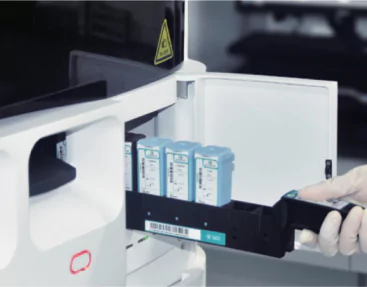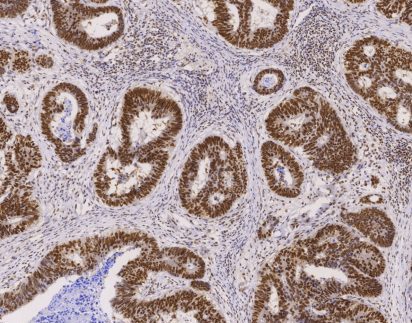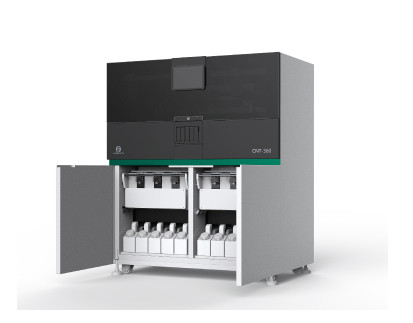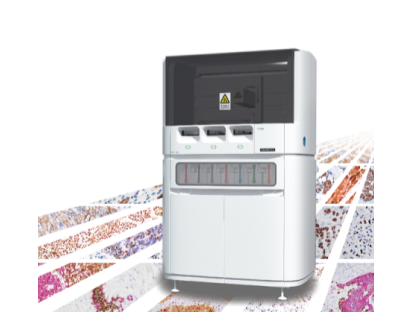What Are the Common Problems in Immunohistochemistry Staining?

By admin
Immunohistochemistry (IHC) staining involves a procedure that may encounter obstacles. It’s vital to address these issues adeptly to ensure outcomes and preserve the authenticity of your samples. Three common challenges in IHC staining are staining results, excessive background noise, and unspecific staining patterns. These problems can arise from sources, highlighting the need to troubleshoot them effectively to enhance your methods.
Weak Staining: Causes and Solutions
Insufficient staining may affect the visibility of antigens. Result in negative outcomes, on tests due to factors like low antibody levels or short incubation periods during testing processes, or less effective ways of retrieving antigens from samples. Discovering the antibody that matches the target antigen and diluting it correctly is crucial to address this problem. Also sometimes increasing incubation time or using methods, for retrieving antigens can improve the intensity of staining.
You may also consider revising the quality of your reagents. Usage of reagents from reputable suppliers, like Celnovte, ensures the reliability of your results. The Celnovte CNT360 Full-Automatic IHC&ISH Stainer incorporates advanced technologies that streamline the staining process and help eliminate variability, providing consistent results.
High Background: How to Minimize It?
Excessive background can sometimes make it difficult to see stains. This might cause misunderstandings, in analysis results. This problem usually happens when the primary antibody binds much or when washing steps are not done properly. To lessen background staining effects it’s important to ensure your washes are done well because any leftover reagents can create signals. At times using blocking solutions or lowering the antibody concentration can help reduce background disruptions.
Celnovte’s innovative staining systems can help address these challenges by implementing optimized protocols to enhance specificity and clarity. With tools such as the CNT330 Full Automatic Multiplex IHC Stainer, you can tackle high background issues effectively, making your results clearer and more reliable.
Non-Specific Staining: Identifying the Culprits
Nonspecific staining can make interpretation challenging. May result from factors, like primary antibodies’ lack of specificity or inadequate blocking and cross-reactivity with secondary antibodies must be addressed for effective troubleshooting measures to be taken into account first by assessing the antibody choices and their suitability, for the particular tissues under study.
Optimal utilization of blocking methods is essential as many incorrect identifications stem from the blocking of specific antibody attachment sites. By incorporating quality reagents and a suitable blocking procedure one can notably diminish specific staining occurrences.
Working with companies, like Celnovte to enhance your IHC protocols effectively can result in accuracy and specificity in your staining procedures.
How Can You Improve Your IHC Protocol with Celnovte Solutions?
Incorporating cutting-edge technology into your IHC procedures can improve results. Tackle staining challenges effectively. That’s where Celnovte comes in offering tailored solutions to meet these needs.
Introducing Celnovte CNT360 Full-Automatic IHC&ISH Stainer
The CNT360 Full-Automatic IHC&ISH Stainer optimizes immunohistochemistry by providing a streamlined and fully automated staining process. With a substantial throughput of 60 samples and a staining completion time of just 2.5 hours, it caters to the demands of busy laboratory environments.
This system is custom-made to assist with methods like chromogenic in situ hybridization (ISH) reducing the likelihood of issues with faint staining and excessive background interference. This automated feature ensures uniform outcomes across samples—an aspect, for accurate diagnostics and research purposes.
Utilizing CNT330 Full Automatic Multiplex IHC Stainer
The CNT330 Full Automatic Multiplex IHC Stainer presents a significant advancement in multiplex staining protocols. This technology facilitates the simultaneous staining of multiple antigens on a single slide, improving the efficiency of sample usage and providing valuable insights into the spatial relationships between different antigens.
Furthermore, the sophisticated algorithms used in the CNT330 staining device reduce the chances of producing stains and background problems thus improving the accuracy of your outcomes. This technology does not boost effectiveness. Also notably diminishes the inconsistencies frequently observed in manual staining procedures.
To sum up, the discussion, tackling the issues in immunohistochemistry staining effectively demands a focus on specifics and fine-tuning of procedures. Employ tools such, as Celnovtes automated staining technology to boost the dependability and precision of your IHC investigations. This will lead to results and research findings.
How to Efficiently Troubleshoot IHC Staining Issues?
Ensuring results hinges, on troubleshooting IHC staining problems through a systematic approach that leads to efficient problem identification and resolution practices outlined in a step-by-step guide to streamline the process and enhance staining quality, for optimal outcomes.
Step-by-Step Troubleshooting Guide for Weak Staining
Inaccurate staining can significantly impact the accuracy of diagnosis. Begin by ensuring that the primary antibody matches the target antigen and the concentration is suitable. If staining remains faint after confirming the antibody quality reassess your procedures, for antigen retrieval. Modifying the temperature and duration of retrieval can greatly influence antigen visibility.
Adding controls to your procedures can assess how well the antibody and staining process are working effectively overall. If the controls show staining but your test samples don’t match up take a look, at how you prepared the samples. Differences in strength can impact how well antigens are preserved. By using top-tier reagents, for quality assurance purposes you can ensure results. Boost your trust in the accuracy of your staining results.
Effective Techniques to Reduce High Background in IHC
Having a background can sometimes make it hard to spot discoveries clearly enough; it’s important to start by checking how much you’ve diluted your main antibody because too much binding can result in more background staining showing up unexpectedly strong. Make sure to follow through with washing steps, between each staining process; using a wash buffer that is properly made is key, to getting rid of any antibodies that are not bound correctly.
Using a blocking agent tailored to the tissue type can help decrease specific binding effects and improve the accuracy of your assay results by reducing background noise significantly. The addition of an antibody, with specificity, will further reduce background signals and make your desired antigen stand out more clearly in the analysis.
If there are problems, with the background appearing troublesome in your work or research setting you may want to consider incorporating modern solutions such, as the Celnovte CNT330 stainer to help address this issue effectively. This state-of-the-art multiplex staining device utilizes algorithms to minimize background disturbances thereby enabling a more precise assessment and understanding of the outcomes you obtain.
Solving Non-Specific Staining Challenges in IHC
Inconsistent staining often hinders the accuracy of IHC findings significantly check the antibodies employed since some might react with antigens, in your tissue samples leading to interpretations about specific markers’ expression carefully assess your primary antibody’s specificity against various antigens to ensure suitability prior to to, to advancing to additional staining procedures.
Furthermore enhancing your blocking technique may significantly boost accuracy. Conduct trial runs using blocking agents and concentrations customized for your sample. If problems persist, try experimenting with an antibody that exhibits cross-reactivity, with your primary antibody as this can enhance the precision of the response.
Looking into options, like the Celnovte CNT360 IHC & ISH Stainer could make a significant impact on your work process. This advanced staining machine focuses on minimizing signals and ensuring antigen detection. By automating stages of the procedure the risk of errors, from operators decreases, resulting in more consistent outcomes.
Why Choose Celnovte for Your IHC and ISH Needs?
Choosing the partner for your immunohistochemistry and, hybridization requirements is crucial for achieving the best staining outcomes possible. Celnovte is committed to offering cutting-edge solutions for IHC staining challenges while guaranteeing quality and innovation, with customized support to meet laboratory needs.
Commitment to Innovation and Quality
Celnovte is known for its dedication to innovation and top-notch quality, in the realm of immunohistochemistry. The creation of automated tools like the CNT360 and CNT330 staining systems demonstrates Celnovte’s commitment, to merging technology with laboratory processes. These systems are crafted to enhance the standards while boosting precision and consistency.
The thorough investigation conducted on these items guarantees that each element. From chemicals to staining procedures. Meets quality benchmarks. Incorporating technology into your staining techniques will reveal how Celnovte consistently improves the efficiency, in your lab and minimizes staining challenges.
Comprehensive Support and Resources from Celnovte
Recognizing the importance of support, for labs using IHC staining systems is crucial for Celnovte Laboratories. They provide a range of resources such as application guides and technical assistance to empower technicians in handling any challenges they may encounter while working with protocols. The wealth of knowledge and experience available, from Celnovte can offer reassurance to technicians dealing with staining procedures.
Invest in Celnovtes cutting edge systems. Benefit from support that helps laboratories reach their full potential efficiently and effectively. When dealing with challenges, in IHC staining procedures; trust, in Celnovtes resources and personalized guidance to enhance the quality of outcomes. Celnovte is there to assist you in addressing staining issues and represents a partnership focused on fostering success across all aspects of your IHC projects.
By incorporating cutting-edge solutions such, as Celnovtes automated IHC and ISF staining machines into your procedures you greatly increase the chances of achieving notch staining results. Make an effort to enhance your methods, with reliable products that can truly elevate your work in the lab.











